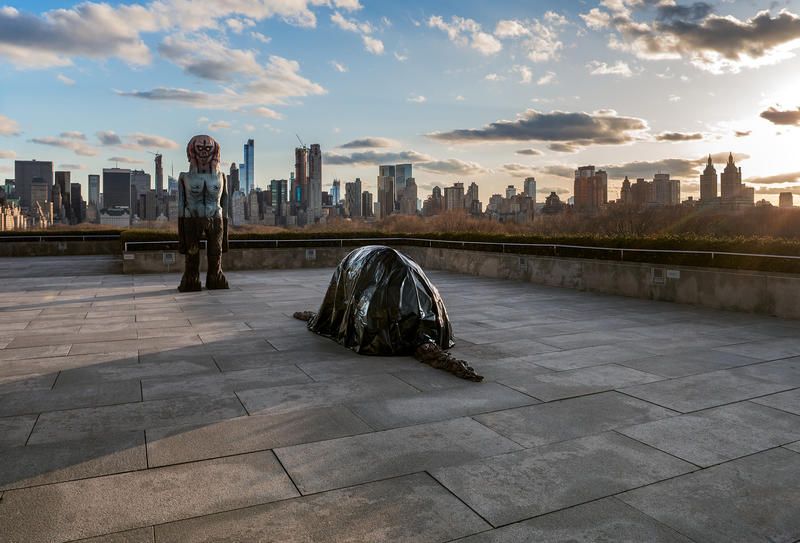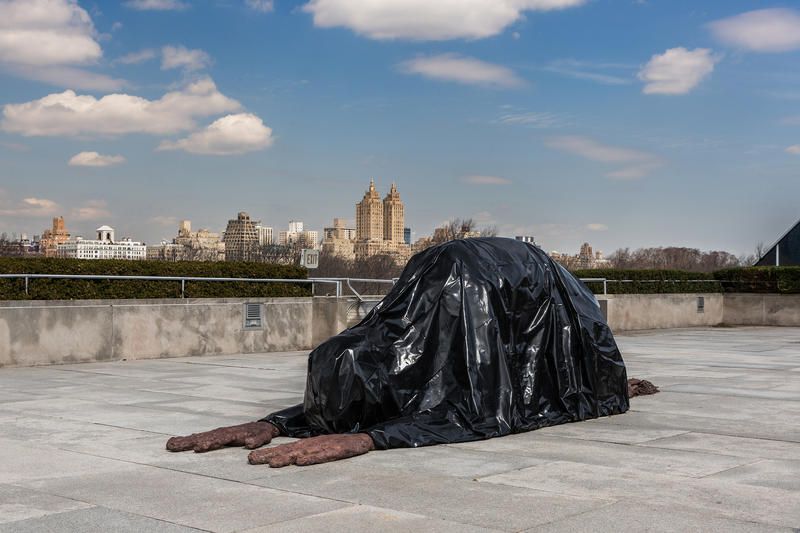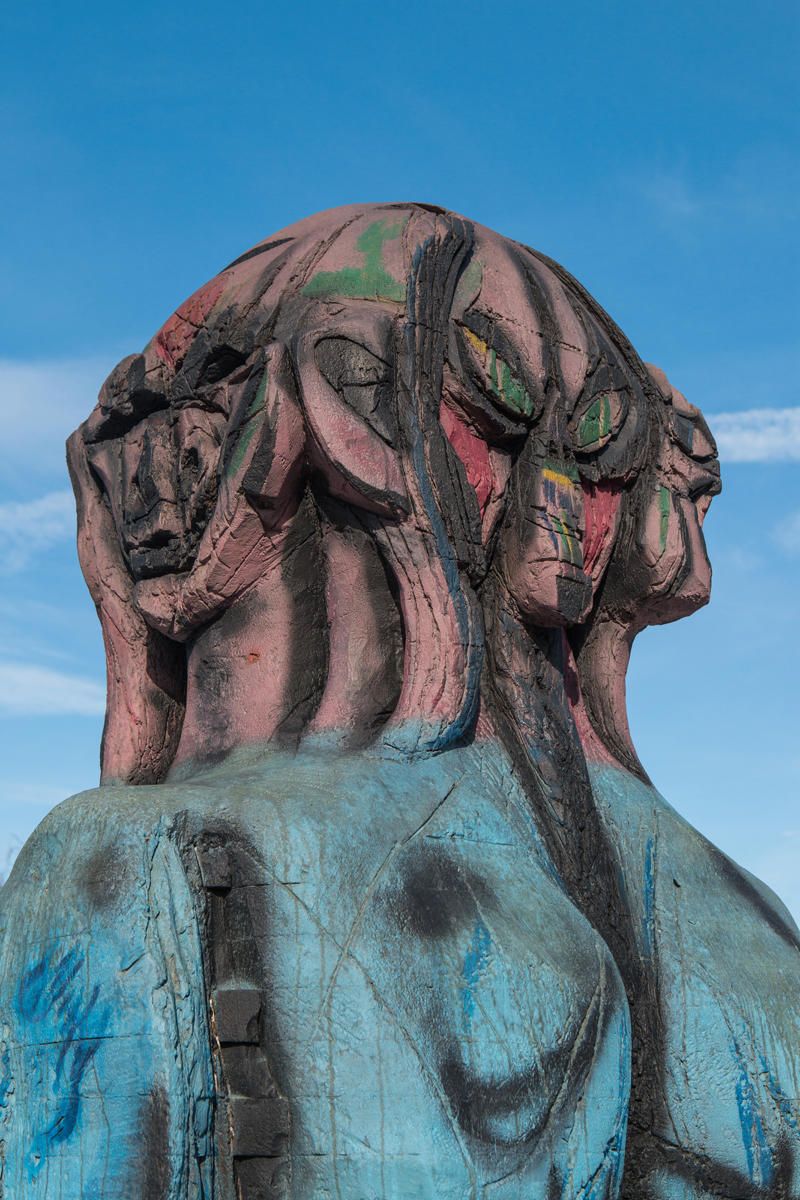Last Chance to Catch NYC's Holiday Notalgia Train
We met the voices of the NYC subway on our nostalgia ride this weekend!


Walk out onto the roof of The Metropolitan Museum of Art, and you’ll be greeted by two unearthly large-scale sculptures that have just landed there for this year’s rooftop art commission. The site specific installation, titled We Come In Peace, was created by Pakistani artist Huma Bhabha and is now on view to the public on the Iris and B. Gerald Cantor Roof Garden, which has previously hosted the haunted house from Psycho and a host of ancient artifacts.
The sixth commission for the outdoor roof space, Bhabha’s sculptures consist of a 12-foot-tall, five-headed intersex figure, “We Come in Peace,” and the 18-foot-long prostrate Benaam — an Urdu word that translates to “without name.” The two extraterrestrial figures face one another, deliberately positioned to resemble a dramatic scene between actors on a film set. We Come in Peace borrows its title from the classic American science-fiction film The Day The Earth Stood Still (1951)

, a tale of first contact between humans and aliens.

Photograph by Hyla Skopitz, courtesy The Metropolitan Museum of Art.

Photograph by Hyla Skopitz, courtesy The Metropolitan Museum of Art.

Photograph by Hyla Skopitz, courtesy The Metropolitan Museum of Art.
The two statues were initially handcrafted to scale by Bhabha using ephemeral materials, such as cork, Styrofoam, air-dried clay, and plastic, and then cast in bronze. The use of bronze allowed her to form actual monuments although the sculptures still retain the look and feel of their original materials, and have a distressed appearance. They are simultaneously intricate and simple, with the installation only consisting of the two figures.

Photograph by Hyla Skopitz, courtesy The Metropolitan Museum of Art.
Through her work, Bhabha aims to invoke feelings of pain and survival, with the afflicted bodies of the sculptures speaking to life’s impermanence. As an artist, Bhabha has historically created work that addresses political themes of colonialism, war, displacement, and memories of place. Using found materials of everyday life, she creates human figures that “hover between abstraction and figuration, monumentality and entropy,” a release for the installation states. The sculptures reference historical artworks that range from ancient African and Indian sculpture to modern creations, speaking to Bhabha’s interest in art history and geography.
We Come in Peace was conceived by the artist in consultation with Sheena Wagstaff, Leonard A. Lauder Chairman of Modern and Contemporary Art, and Shanay Jhaveri, Assistant Curator of South Asian Art, both of The Met’s Department of Modern and Contemporary Art. The exhibit will be on view at The Met’s rooftop garden from April 17th until October 28th, 2018.
Next, check out The Top 10 Secrets of the Metropolitan Museum of Art and the Unfinsihed Areas of the Metropolitan Museum of Art.
Subscribe to our newsletter